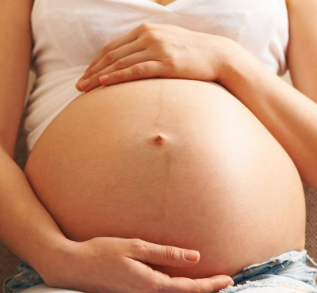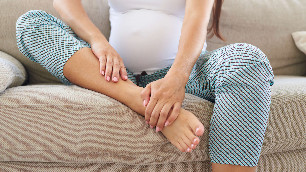
In many ways, pregnancy can be a time of phenomenal changes in a woman's body. As the woman prepares for the imminent birth of a child, she may notice some unexpected side effects. These can include the growth of thicker hair, shine and hardened nails, radiant skin and an increase in the size and fullness of the breasts.
Unfortunately, not all changes in pregnancy are desirable and pleasant. There will be significant weight gain, mood swings and frequent urination. This is due to the fact that pregnancy is accompanied by profound changes in the female body due to the restructuring of the hormonal background. Veins are also subject to significant changes - their tone decreases, the permeability of the walls increases, and blood flow slows down. Varicose veins are one of the diseases that can appear during pregnancy or begin to actively progress.
WHAT IS VARICOSE DISEASE
Varicose veins of the lower extremities are permanent and irreversible varicose veins that are the result of gross changes in their walls, as well as the lack of their valve apparatus due to a genetic defect. The primary factors in the formation of varicose veins are hereditary weakness of the vascular wall. Secondary factors that lead to varicose veins are long-term stress on the lower extremities.
Statistics show that 40-65% of expectant mothers develop varicose veins at least once in their lives. Most obese women suffer from varicose veins during pregnancy.
Although varicose veins are most common on the legs, they can occur elsewhere. Especially in late pregnancy, meandering veins can appear on the buttocks, vagina or vulva. This occurs when the lower abdomen and uterus increase the pressure on the veins in these areas.
CAUSES of varicose veins during pregnancy
As the term increases during pregnancy, a number of changes occur that create the preconditions for varicose veins.
- First, the uterus, as it grows, puts pressure on the inferior vena cava - the largest vein in the human body. Excessive pressure creates a slowdown in blood flow, putting more stress on the veins in the legs that hold more blood. This leads to varicose veins during pregnancy on the legs.
- Second, during pregnancy, a woman's body produces more blood to support a developing baby, uninterrupted delivery of oxygen and nutrients to the placenta and fetus. Due to the increased load, the veins have to work harder to pump carbonated blood back into the heart from the extremities and pelvis. This can lead to venous valve insufficiency and accumulation of blood in the legs, ankles, feet and other areas.
- Third, increasing the levels of female sex hormones during pregnancy reduces the tone of smooth muscles in the walls of blood vessels (especially veins). It can also contribute to varicose veins in pregnant women.
RISK FACTORS OF VARICOSIS DURING PREGNANCY
Varicose veins are considered diseases with a hereditary predisposition. If the mother or grandmother suffered from varicose veins during pregnancy, the woman's risk of developing this disease increases dramatically.
The frequency of varicose veins increases with age, weight gain, and each subsequent pregnancy. If a woman carries twins or triplets, the risk of varicose veins in a pregnant woman's legs doubles.
Lifestyle and work habits (long hours of standing or sitting still) can also cause varicose veins.
Symptoms of varicose veins in pregnant women
Some women have slightly swollen, crooked, multicolored veins on their legs - just a cosmetic problem. In others, varicose veins during pregnancy cause unpleasant symptoms - swelling, pain or severe discomfort in the legs. In all women with varicose veins on the legs, this is a key sign of varicose veins. If left untreated, vein damage can lead to serious complications, including blood clots, phlebitis and trophic ulcers. In addition, the risk of a fatal complication - PE (pulmonary embolism) increases.

You must watch for signs of varicose veins during pregnancy:
- swelling in the legs and ankles;
- cramps or pain in the thigh or lower leg;
- fatigue, heaviness in legs;
- restlessness, especially at night, desire for constant movement of the legs;
- itching, dry or pale skin on the feet, burning sensation;
- twisted, protruding "stars, " larger coiled veins;
- sores on the legs or ankles that need to heal for a long time or do not heal at all;
- leg pain that disappears when a woman walks or raises her legs.
WILL VARICOSIS BE WORSE DURING PREGNANCY?
Unfortunately, varicose veins often get worse as the pregnancy progresses. As the saphenous veins dilate, bend, swell, and become more visible, the woman increasingly notices increased pain and other symptoms (swelling, skin changes, weight).
VARICOSIS DURING PREGNANCY: WHAT TO DO
If a woman has any symptoms of varicose veins, it is necessary to visit a phlebologist. After a detailed physical examination, carefully assessing the condition of the feet, ankles, legs and thighs, the doctor will confirm the presence of varicose veins and rule out possible complications (using ultrasound and vascular Doppler measurements). As for varicose veins in the vulva, the obstetrician-gynecologist will notice this during a routine examination.
TREATMENT OF VARICOSIS IN PREGNANT WOMEN
Most often, surgery and minimally invasive procedures are not prescribed for the treatment of varicose veins during pregnancy. This is associated with a high risk of complications and recurrence. In addition, prescribing drugs - phlebotonics, anti-inflammatory drugs, platelets - is very limited.
There are a number of guidelines that help in the safe and relatively effective treatment of varicose veins in expectant mothers.
- Dosed physical activity. Swimming, walking or other exercises for pregnant women with varicose veins, which include the leg muscles, help increase blood circulation in the veins of the extremities. The phlebologist, together with the obstetrician-gynecologist, will select an individual set of exercises for a certain period and the severity of the pregnant woman's condition.
- Properly fitted shoes. High heels and a completely flat sole interfere with the movement of the muscles in the legs, disrupting venous blood circulation. You need to choose stable, comfortable shoes with a small heel (3-4 cm).
- Compression jersey. To support the veins during pregnancy, it is necessary to wear compression clothing. The phlebologist will individually choose the degree of compression and the type of product - leggings, socks or leggings. You have to wear them in the morning, without getting out of bed, and take them off in the evening when the woman goes to bed.
HOW TO ENTER VARICOSIS DURING PREGNANCY
There are a number of tips for the prevention of varicose veins in pregnant women, the observance of which facilitates the course of the disease and reduces discomfort:
- Do not cross your legs. Sitting on one leg over the other blocks blood flow through the veins and can lead to an increase in pressure.
- Change position. If you have to sit or stand all day at work, change your posture as often as possible. This prevents blood from accumulating in the legs.
- Sleep on the left side. As your belly gets bigger, lying on your back will become difficult. For varicose veins, try sleeping on the left side, not the right side. This prevents the pressure of the uterus on the veins in the abdominal cavity and helps blood flow from the lower extremities at night.
- Raise your legs. Raise your legs more often during the day. Ideally, they should be above the level of the heart, so that the force of gravity helps a more active blood flow. While lying in bed, you can rest your feet on a pillow to help blood flow while you sleep.
- Watch your salt intake. When you take a lot of salt, more fluid flows into your blood vessels, which can increase the pressure in your veins. Excess fluid penetrates the tissues and leads to edema. Drink plenty of water to help your body maintain proper fluid balance.
- Track your weight. A woman's body changes during pregnancy, the future mother gets fatter. The higher the body weight, the greater the pressure exerted on the veins of the lower extremities. The doctor will assess the gain and clarify the weight norms.
VARICOSIS AFTER BIRTH
The most important concern for expectant mothers is whether the varicose veins will disappear after pregnancy? Varicose veins usually disappear 3 months after the birth of a child. If the changes do not disappear after 3 months, you should contact a phlebologist.
Manifestations of varicose veins that first appear during childbirth usually go away with little or no treatment. However, the more severe the changes, the more likely they are to remain after childbirth and require treatment. Varicose veins in the vagina or vulva almost always resolve naturally after childbirth.
WHAT ARE THE COMPLICATIONS OF THE DEGREE OF VARICOSIS
Varicose veins can lead to serious complications. There is an increased risk of developing dangerous conditions: blood clots and venous ulcers.
There are two main types of blood clots. Superficial venous thrombi form in the saphenous veins. They do not usually migrate to the lungs. Dangerous deep vein thrombosis. The blood clots formed in them can break and enter the pulmonary vessels. It is important to see a doctor immediately if:
- varicose veins become hard, like ropes;
- the surrounding tissue is hot, painful or swollen;
- changes in vein color are noticeable;
- ulcers appear on the skin;
- painful, strong swelling appears on one leg.
In these cases, the phlebologist will determine treatment tactics, including minimally invasive surgical methods, to eliminate inflammation and the risk of life-threatening complications.























